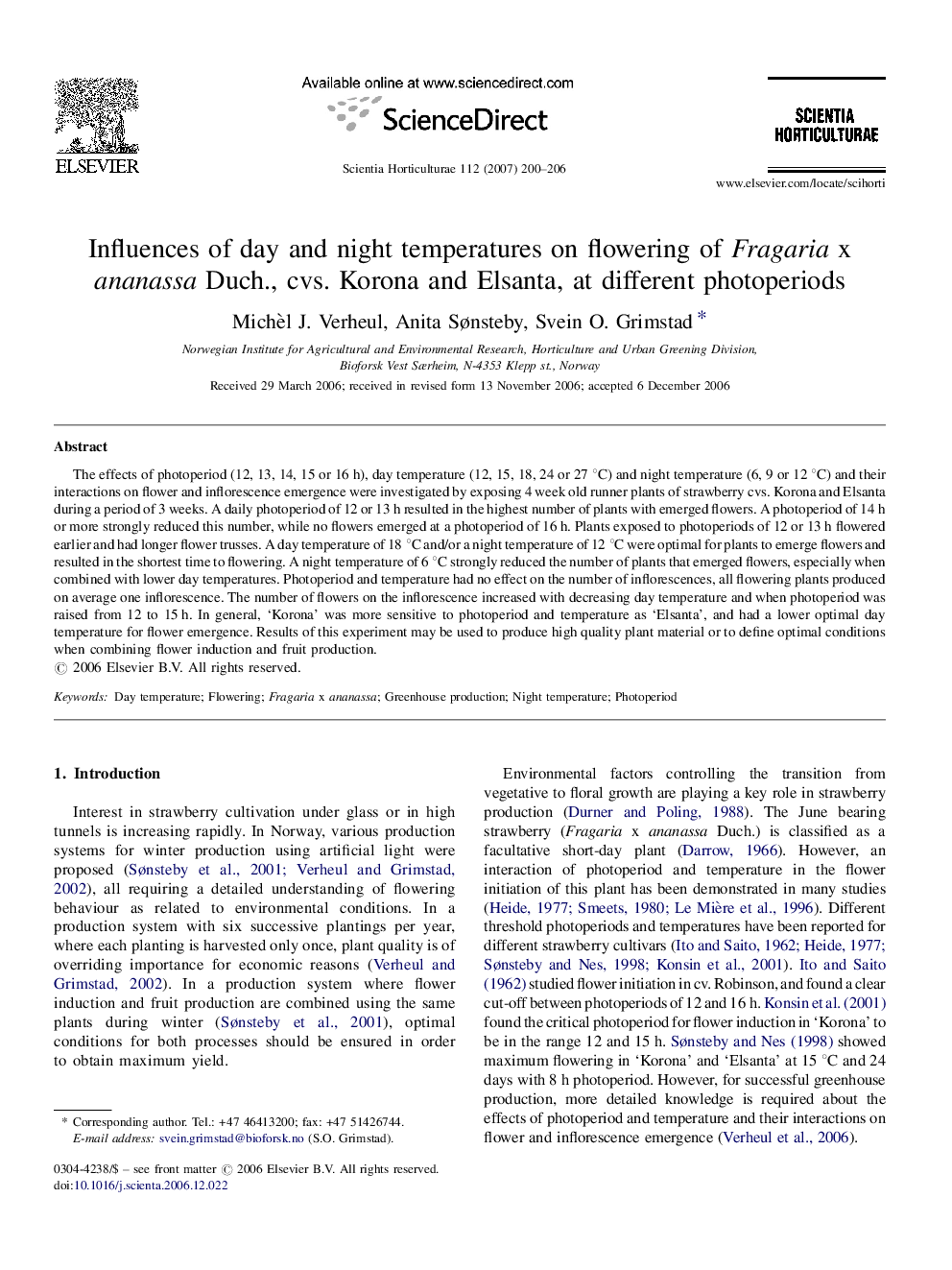| Article ID | Journal | Published Year | Pages | File Type |
|---|---|---|---|---|
| 4569847 | Scientia Horticulturae | 2007 | 7 Pages |
The effects of photoperiod (12, 13, 14, 15 or 16 h), day temperature (12, 15, 18, 24 or 27 °C) and night temperature (6, 9 or 12 °C) and their interactions on flower and inflorescence emergence were investigated by exposing 4 week old runner plants of strawberry cvs. Korona and Elsanta during a period of 3 weeks. A daily photoperiod of 12 or 13 h resulted in the highest number of plants with emerged flowers. A photoperiod of 14 h or more strongly reduced this number, while no flowers emerged at a photoperiod of 16 h. Plants exposed to photoperiods of 12 or 13 h flowered earlier and had longer flower trusses. A day temperature of 18 °C and/or a night temperature of 12 °C were optimal for plants to emerge flowers and resulted in the shortest time to flowering. A night temperature of 6 °C strongly reduced the number of plants that emerged flowers, especially when combined with lower day temperatures. Photoperiod and temperature had no effect on the number of inflorescences, all flowering plants produced on average one inflorescence. The number of flowers on the inflorescence increased with decreasing day temperature and when photoperiod was raised from 12 to 15 h. In general, ‘Korona’ was more sensitive to photoperiod and temperature as ‘Elsanta’, and had a lower optimal day temperature for flower emergence. Results of this experiment may be used to produce high quality plant material or to define optimal conditions when combining flower induction and fruit production.
